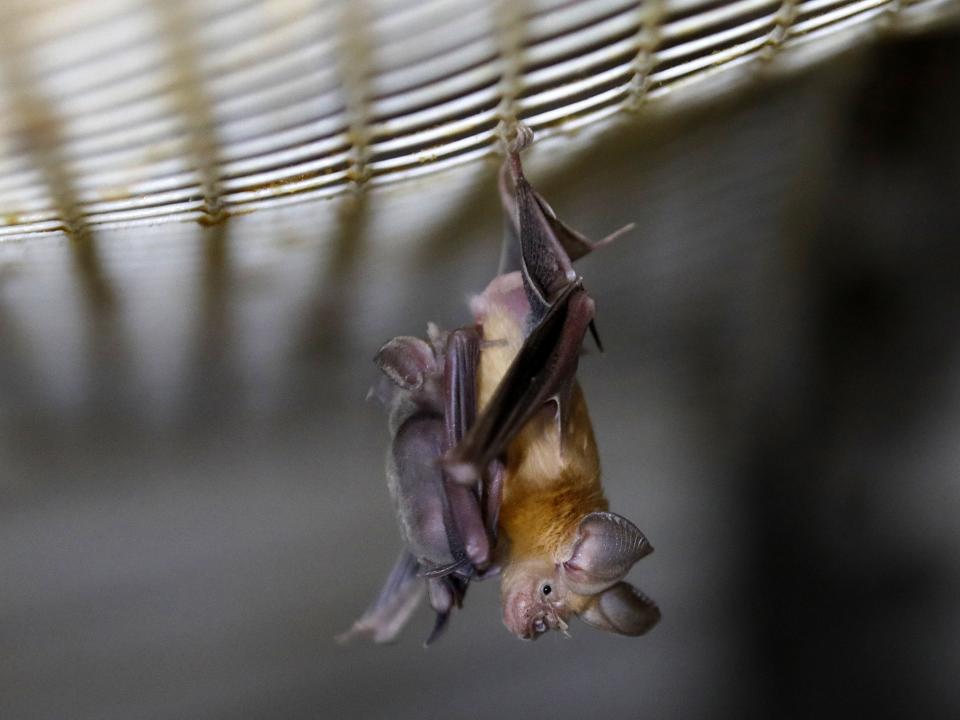Coronavirus: Shifts in land use could be creating ‘hotspots’ for Covid-carrying bats, study finds
A new study has found that changes in land use in Asia are inadvertently creating conditions ideally suited to the horseshoe bats that can carry coronavirus and which threaten to serve as “hotspots” for the disease’s further transmission from animals to humans.
While the precise origins of the original SARS-CoV-2 virus has not been definitively established, it is widely believed by scientists to have first passed from one of the bats to a human via a wet market in the city of Wuhan, China, in November 2019, perhaps by way of an intermediate host such as a pangolin.
Now the findings from researchers at the University of California, Berkeley, the Polytechnic University of Milan and the Massey University of New Zealand, which were published in the journal Nature, indicate that practices from settlement building, agricultural expansion, the fragmentation of forests and the construction of facilities for intensive livestock production could all be playing a role in keeping the threat of a fresh outbreak alive.
Human encroachment into finely-tuned ecosystems typically reduces the biodiversity of those habitats, which can drive out “specialist” species dependent on the status quo to survive and allow “generalist” substitutes to take their place, the study’s authors explain.
Horseshoe bats are generalists and have often been spotted in rural areas subjected to disturbance by humans, according to the researchers, who previously observed a similar relationship between forest fragmentation in Africa and the rise of the Ebola virus.
“By creating conditions that are disadvantageous to specialist species, generalist species are able to thrive,” said the study’s co-author Paolo D’Odorico of UC Berkeley.
“While we are unable to directly trace the transmission of SARS-CoV-2 from wildlife to humans, we do know that the type of land use change that brings humans into the picture is typically associated with the presence of these bats who are known to carry the virus.”
The project involved analysing land usage patterns across western Europe to southeast Asia, where the creatures are most commonly located.
They found that ongoing demand for meat products in China in particular is continuing to drive a rise in intensive farming, which in turn is creating optimum conditions in which the bats can thrive.
Livestock farming is thought to be particularly vulnerable to the spread of disease given that it involves large concentrations of genetically similar, often immune-suppressed animals being kept in close quarters.
The analysts said that southeastern China, Japan, the northern Philippines and Thailand were the most likely areas to find themselves in danger of cultivating accidental virus hotspots.
While China has been active in replanting trees over the course of the last two decades in response to the climate crisis, its efforts would be better directed towards creating continuous areas of forest cover and wildlife corridors to help specialist species prosper, the researchers said, as opposed to bolstering isolated islands of woodland.

“Human health is intertwined with environmental health and also animal health,” said Professor D’Odorico.
“Land use changes can have an important impact on human health, both because we are modifying the environment, but also because they can increase our exposure to zoonotic disease.
“Every formal land use change should be evaluated not only for the environmental and social impacts on resources such as carbon stocks, microclimate and water availability but also for the potential chain reactions that could impact human health.”
Co-author Maria Cristina Rulli, of Milan, said: “We hope these results could be useful for identifying region-specific targeted interventions needed to increase resilience to coronavirus spillovers.”
Read More
Covid: Half of UK adults now fully vaccinated against virus
What do Dr Fauci’s emails reveal about the early days of the Covid pandemic?
People who use social media for information less willing to get Covid jab, study finds


